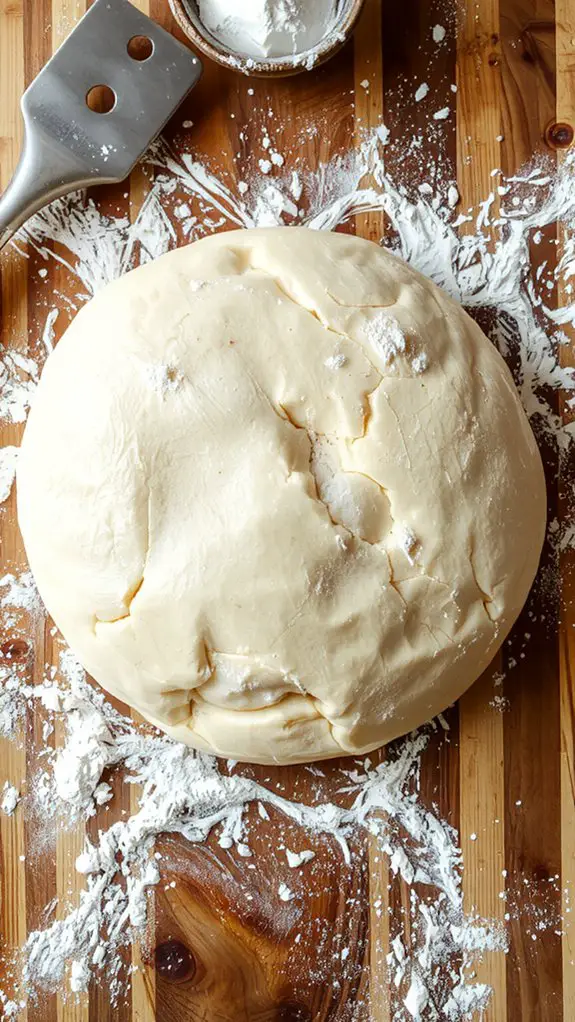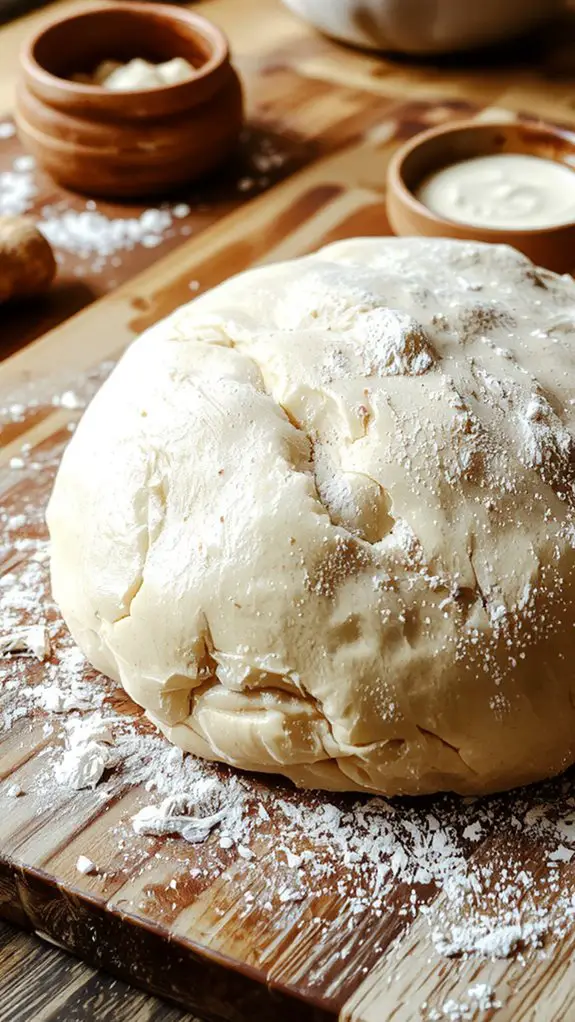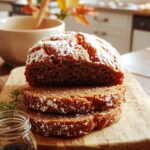I’ve spent years perfecting my sourdough pizza dough, balancing chew with crispness and tang with subtle sweetness. The secret lies in the fermentation—letting time and natural leavening work their magic. But it’s not just about waiting; technique matters, from kneading to shaping. If you’re after a crust that’s both airy and sturdy, with flavors deeper than any commercial yeast can offer, there’s more to uncover.
Recipe
There’s something magical about sourdough pizza dough—it’s chewy yet crisp, tangy yet balanced, and downright addictive once you take that first bite. Forget store-bought crusts; this homemade version is a game-changer, thanks to that slow-fermented sourdough starter working its flavor-packed wonders.
I’ve tweaked this recipe more times than I can count, and trust me, the extra time it takes is worth every second. Picture a golden, blistered crust with just the right amount of airy bubbles, topped with your favorite ingredients—it’s pizza night elevated.
Whether you’re a sourdough pro or just starting out, this dough is forgiving, flavorful, and guaranteed to impress. Let’s get baking!
Ingredients
Great sourdough pizza dough starts with quality ingredients—each one plays a vital role in texture and flavor. Here’s what you’ll need, plus insider tricks to nail it every time:
- Bread flour (500g) – The high protein content creates that chewy, stretchy crust sourdough is famous for. *Swap:* All-purpose flour works but expect a slightly softer bite.
- Active sourdough starter (100% hydration) (100g) – The star of the show! Confirm it’s bubbly and ripe for maximum rise and tang. *No starter?* Instant yeast (1 tsp) can sub in a pinch, but you’ll miss the depth of flavor.
- Water (300g, lukewarm) – Hydration is key for an open crumb. Adjust +/- 10g based on your flour’s absorbency.
- Salt (10g) – Enhances gluten development and balances sourness. *Don’t skip!*
- Olive oil (15g) – Adds richness and keeps the crust tender. *Bonus:* A drizzle on top before baking boosts crispiness.
*Pro Tip:* For extra flavor, let the dough cold-ferment in the fridge for 24–48 hours. The slow rise deepens the sourdough character and improves texture.
How to Make the Best Sourdough Pizza Dough Method

- Divide and shape into balls (200-250g each for personal pizzas). Roll each into a tight ball, tucking edges underneath. Place on a floured tray and cover to prevent drying.
- Final proof (1-2 hours) until puffy. Test readiness by pressing a finger lightly into the dough—it should slowly spring back halfway. Overproofed dough collapses easily.
- Preheat your oven and surface (stone/steel) to 500°F (260°C) for at least 45 minutes. A blazing-hot surface guarantees a crisp crust.
- Stretch dough gently by hand—no rolling pin!—to preserve air pockets.
- Top and bake quickly (8-12 minutes) until the crust is golden and blistered. Rotate halfway for even cooking. Pro tip: Less sauce = better browning; soggy pizza stems from overloading.
- Cool briefly before slicing. Resting 2-3 minutes lets the cheese set and prevents toppings from sliding off. For reheating, use a skillet to revive the crisp crust.
Flexibility: Dough balls freeze well for up to 3 months—thaw overnight in the fridge before proofing.
Adjust hydration (+10g water) for a chewier crust or high-altitude baking.
Nutrition
This sourdough pizza dough is a healthier alternative to traditional pizza dough, offering a unique flavor and texture. Below is the nutritional breakdown per serving.
| Nutrient | Amount per Serving |
|---|---|
| Calories | 180 |
| Carbohydrates | 36g |
| Protein | 6g |
| Fat | 1g |
| Fiber | 2g |
| Sodium | 300mg |
Chef Tips
Making sourdough pizza dough isn’t just about the ingredients; it’s also about technique. I’ve learned to handle the dough gently to preserve its airy structure.
Stretch, don’t roll, for better texture. Let it rest at room temperature before shaping to make it easier to work with.
Bake it on a preheated pizza stone or steel for a crispier crust. Practice patience—it’s worth it.






